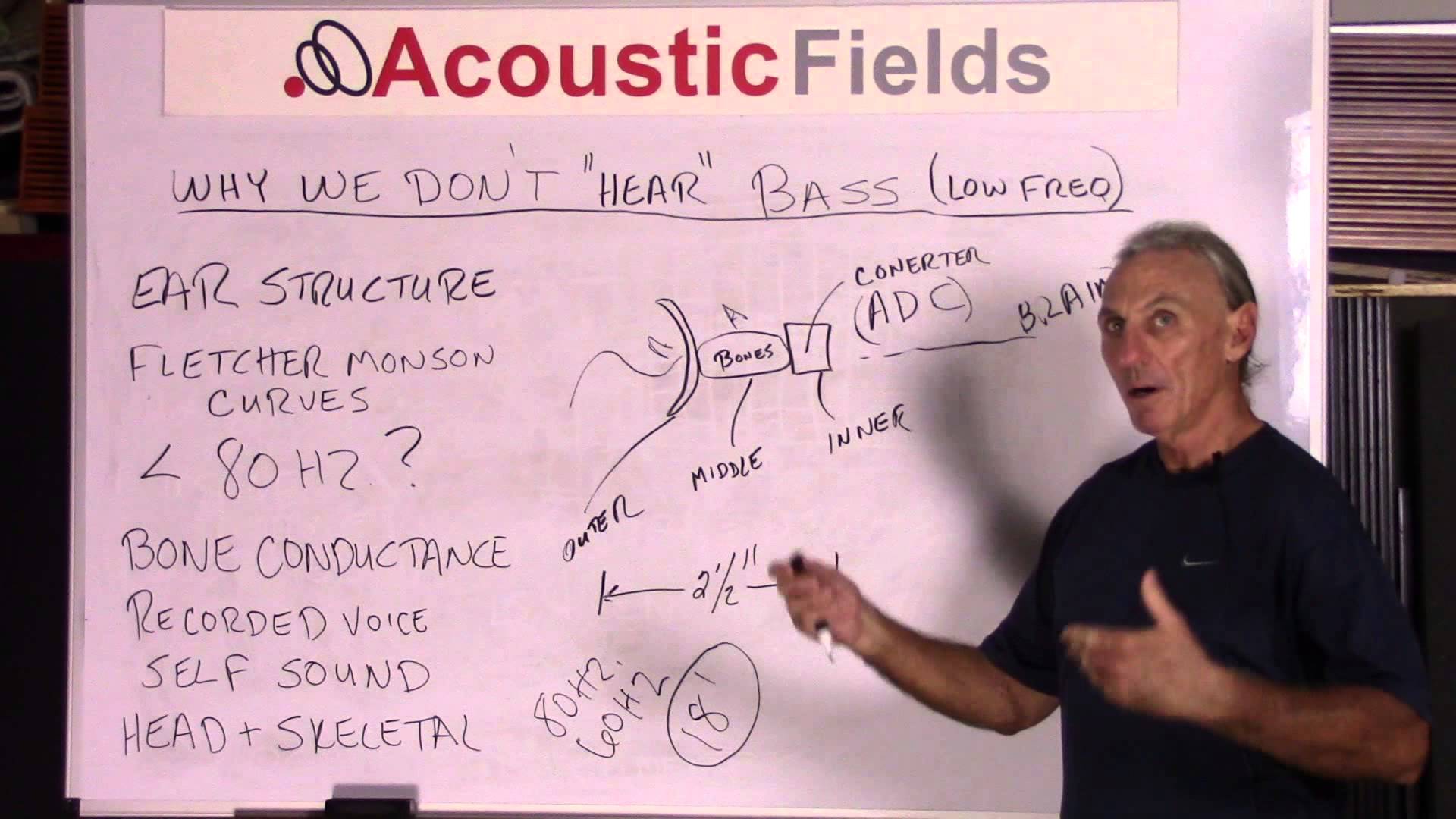Today, we’re going to talk about how we hear bass, or to put it another way, why we don’t really hear bass. With bass energy we kind of feel it and feeling is maybe not a real descriptive term either but for lack of another word, and something that’s easy to communicate in the following video presentation, let’s use the word feel.
So, why don’t we hear bass?
Well because we feel it. Let’s kind of go with that premise right now for purposes of illustration. Let’s look at the ear structure because that’s our hearing device. That’s where all sound energy goes into and is processed in three parts.
It has the outer part, which is your ears. It has the middle part, which are the bones of which there are three sets. And then we have the inner ear, which is really, in electronical terms, kind of an analog wave form.
When energy strikes the ear, it’s an analog waveform, still analog in the middle ear where we have bones vibrating, and then in the inner ear it gets converted into a signal that our brain can then process. So it’s really a converter from analog to digital.
So we have these three parts of the ear and we’re dealing with wavelengths like a sixty hertz wave, which could be eighteen foot long. So we have eighteen foot and our whole ear structure is two and a half inches. Okay? So, how does an eighteen foot wave get processed in this three-chambered system, that converts analog to digital and does it in two and a half inches?
Well, at certain frequencies it does well. But at other frequencies it does not. And in acoustics, and hearing auditory science, there’s a set of curves called the Fletcher-Munson curves and they process this whole hearing system and put numbers to it. If you look at those graphs Fletcher-Munson curves that involve hearing, we see that at less than eighty cycles, this two and a half inches is not really good at processing that long eighteen-foot wavelength.
So how do we do that? How do we hear bass?
Well, we really don’t. Because the Fletcher-Munson curves show that anything above eighty cycles is processed pretty regularly, but below, we have a high margin of error in the signal.
So I think we can safely assume it’s not like everything above eighty cycles and everything below eighty cycles is a little bit difficult for our two and a half inch analog to digital system to process. That said, How do we do it?
Well, the process is called Bone Conductance.
A good way to understand Bone Conductance is to record your voice and play it back. How does it sound to you? Well it’s not going to sound like you think it sounds. It’s not going to sound like your perception of how you think you sound, and that’s the difference.
So what accounts for that? What accounts for that resonant difference or that perception difference? Well it’s the sound of your skull, so to speak. It’s the structure in which your voice is contained, it’s the speaker cabinet. Your mouth is the driver. So it’s all part of that process.
So the big difference between the recorded sound and why you think “I don’t sound like that”… well you do, but not to yourself. Because you have your skull and the bone conductance, the resonances that go on within your skull accounting for your perception of your sound.
So anything below eighty cycles, let’s just argue for discussion purposes, we feel. Okay? We feel it through bone, our skeletal system, and these are the two ways that we really perceive these long wavelengths.
A good experiment to test this out, we do this a lot in our studio, you put the subwoofer right next to your listening chair and put your hand on the subwoofer. And as the low frequency energy is submitted from your main speakers, the sub will come in and at whatever frequency you have it crossed at, let’s just use the eighty cycles as an example, and you listen to the difference and put your hand on the subwoofer and feel the vibrations of the cabinet and you’ll get some kind of idea of how this bone conductance system works. It’s vibrational transmission through the head and through the skeletal system.
In Summary
I hope this explanation of how we hear bass helps. If you want to know more about room acoustics please sign up for my free videos and ebook by joining the mailing list here. I send room tuning tips and things for you to test in your room every Wednesday. They are easy to follow and will really help you enjoy more of your music.
Alternatively feel free to contact me directly at: 520 – 392 – 9486 MST or info@acousticfields.com. You can see more of my research and development story and why I started Acoustic Fields at: https://www.acousticfields.com/who-we-are/.
Thanks and speak soon
Dennis







